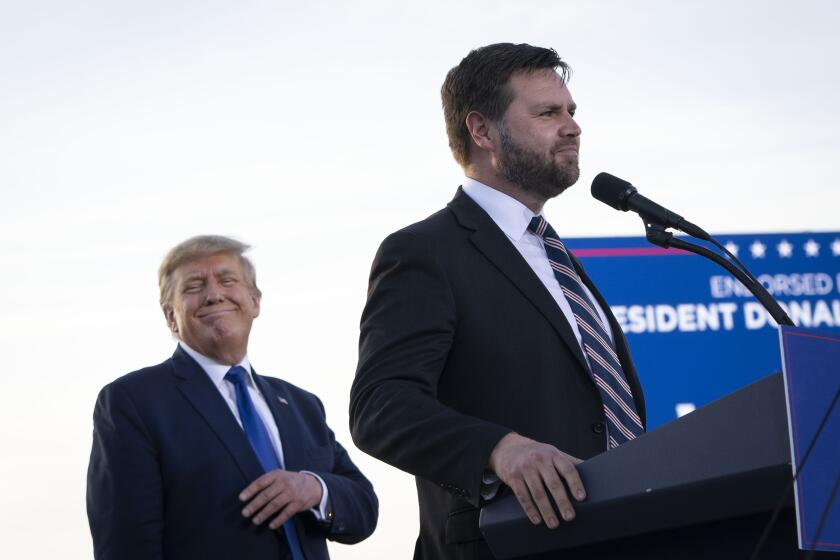Op-Ed: How L.A. can improve its return on our multibillion-dollar transit investment
Metro’s light rail Gold Line expanded east in March, and in a matter of days, its Expo line will link Culver City and Santa Monica, finishing a long-sought rail line between the beach and downtown L.A. Next up, rail through the Crenshaw district, a downtown connector, and the subway-to-the-sea extension of the Purple line to the west side.
In many parts of Los Angeles, all this new transit hasn’t just helped people get around, it has fueled development boomlets. In Pasadena, downtown and in Hollywood in particular, new apartment buildings, hotels, offices and stores have been springing up in the vicinity of rail lines. Our regional investment in better public transportation has helped increase the value of land and property along many of the transit routes.
Fairness suggests that the taxpayers who are footing the bill for the transit lines should share in the wealth that rail creates.
Currently, all that increased value flows primarily to private developers and property owners. They get to charge higher rents and enjoy increasing property values. Fairness suggests that the taxpayers who are footing the bill for the transit lines should share in the wealth that rail creates. Outside the U.S., there are many models of successful programs that allow transit agencies to recoup some of the public’s investment and use it to benefit surrounding communities. The practice is called value capture.
The Hong Kong Mass Transit Railway, for example, is operated by MTR Corp. Ltd., a public-private entity that is entitled to buy land near its rail lines, develop it and lease it. Two-thirds of the Hong Kong transit system’s revenues come from just such land development and property leases. The money generated by leases has financed expansion, upgrades, and maintenance of the system while keeping fares lower than in many world cities.
In Brazil, transit agencies deploy a variety of tools to capture the value that their projects create. For example, they can sell bonds in the private market that allow developers to pay for enhanced building entitlements. The government sets a base density, and the right to build at higher densities near rail transit is auctioned off. In Sao Paulo, two recent transportation-bond auctions generated $2.5 billion, which was used to pay for transit and other infrastructure in redevelopment areas.
The transit authority in Curitiba, the capital of the Brazilian state of Paraná, plans a similar program to recoup the cost of converting an urban highway into a boulevard with bus rapid transit. It is auctioning off development rights along the thoroughfare. The money raised will fund new bus terminals, as well as parks and historic preservation.
Here in Los Angeles, Metro has no such tools. It hasn’t participated in obvious development booms along the Purple and Red lines and the Gold line. How much added value has it left on the table? Here’s a sample: Census data show that apartments built after 2000 — soon after the rail lines opened — in the vicinity of the Pasadena, downtown and Hollywood stations are renting for $400 to $900 more a month than those built before 2000. Part of that rent increase is certainly due to the proximity of the taxpayer-financed rail systems that feed the areas.
If Metro had even a share of the increased value it has helped to generate in these neighborhoods it could make a big difference in L.A., where funding for traditional anti-poverty programs and redevelopment is stagnant. For instance, value captured from downtown L.A. development could aid communities along Metro’s Blue line in South L.A., where economic renewal has not been robust.
Metro, and other transit agencies, should be allowed to establish what are known as Enhanced Infrastructure Financing Districts. The districts would cover Metro’s rail system, extending into the neighborhoods around transit stations and matching the service area. In these areas, Metro would have the authority to, at the least, assess a tax on the increase in land value created by public rail investments. But its district powers could go beyond that as well. It could also be allowed to buy and develop land, at market rates, and hence build near stations or in the airspace above subway entrances.
In return for the authority to tax or to develop property, Metro projects should be required to meet affordable-housing targets or it should set aside some portion of its tax revenues for that purpose. Some of the money could also be earmarked for the transit system itself, as in Hong Kong, or for parks and other projects, as in Brazil.
L.A. Metro can — and should — be much more than a people mover. Armed with the power to capture the value its growth is creating, it could recycle taxpayer-funded rail transit into a force to do even more to lift the city, especially our neediest neighborhoods.
Marlon G. Boarnet is professor and chair of the Department of Urban Planning and Spatial Analysis at the USC Sol Price School of Public Policy. Gary Painter is a professor of public policy and director of the USC Sol Price Center for Social Innovation.
Follow the Opinion section on Twitter @latimesopinion and Facebook
More to Read
A cure for the common opinion
Get thought-provoking perspectives with our weekly newsletter.
You may occasionally receive promotional content from the Los Angeles Times.










